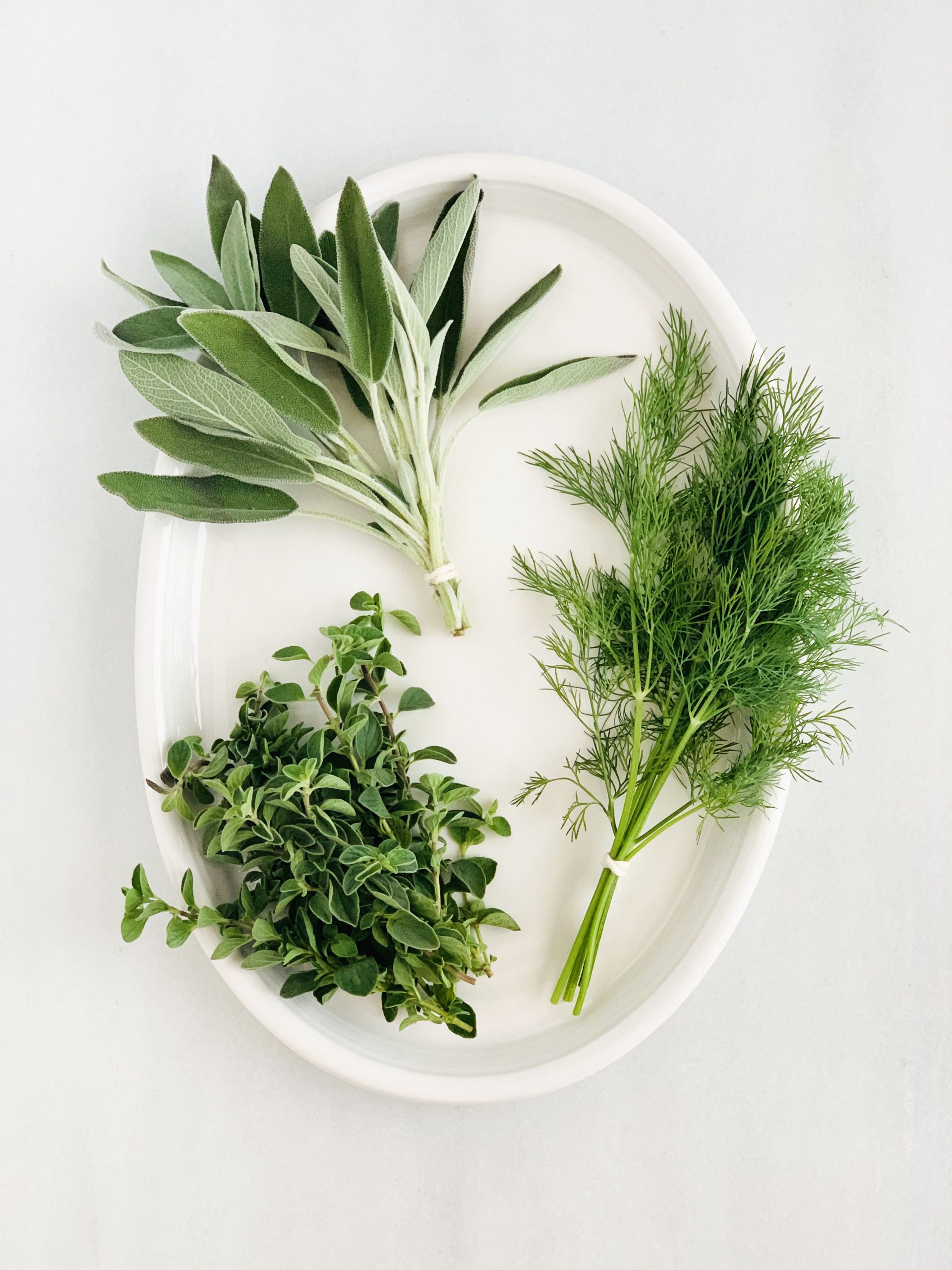Not only are fresh herbs a great way to infuse flavor in foods, they provide nutrition benefits without added sugar or saturated fat! Herbs contain little to no sodium, which is a huge plus. Fresh herbs are easy to grow at home too, especially for beginner gardeners. If you use herbs on a regular basis, it is definitely worth growing your favorites. Read about these fresh herbs and tips on cooking with them!
Basil
Basil is a member of the mint family with many varieties including sweet, Thai, lemon and purple. It is a good sources of vitamin K and contains antioxidants. Basil is so versatile and commonly used in pasta dishes, salads, pizzas, stir fry sauces, marinades, dressings, and pesto. When preparing, gently tear from the stem and chop or chiffonade to prevent bruising.
Dill
Fresh dill is rich in antioxidants and contains vitamin C, vitamin A, and magnesium. When preparing fresh dill, remove the leaves or use whole sprigs for flavoring. It also makes a pretty garnish. Dill pairs nicely with fish, cucumber salads, soups, roasted vegetables, potatoes, and yogurt dips such as tzatziki or homemade ranch.
Parsley
Parsley has a mild grassy flavor. There are two main types: flat-leaf and curly. Flat-leaf is preferred for cooking due to the flavor factor. Curly parsley is used mostly as a garnish. Parsley is a source of vitamin K, vitamin C, and vitamin A. Parsley is a common ingredient in sauces, dips, marinades, soups, and salads such as tabbouleh. When you need a pop of color for your dish, reach for parsley to dress it up.
Sage
Salvia is the Italian word for sage, which is derived from the Latin word salus, meaning health, safety or well-being. Native to the northern Mediterranean coast, sage has silver, green, and blue hues. It adds rich flavor to roasts, stews, sauces, pasta, pizza, and casseroles. Sage is very aromatic and a member of the mint family. Fresh sage is a source of vitamin k, vitamin A, and vitamin C.
Oregano
Oregano is also a member of the mint family and full of antioxidants. It is often used in pasta sauce, marinades, and salad dressings. Oregano pairs perfectly with roasted chicken, grilled seafood, pizza, and vegetables. When cooking with oregano, the leaves can be removed from the stems and either chopped or kept whole.
Chives
Chives are related to onions, leeks, and garlic. They are more slender and milder than green onions. Chives are perfect to top baked or mashed potatoes, dips, soups, eggs, and salads. Add to dishes right before serving because heat can ruin their flavor.
Thyme
Thyme is a light herb. The leaves are small, so they do not require chopping. When cooking with thyme, add it earlier in the process to allow the oils time to release. Thyme compliments pasta sauces, roasted vegetables, grilled or baked fish, homemade salad dressing, and meats. Whole sprigs are perfect for stews or as a garnish. It marries nicely with rosemary and sage in recipes.
Have leftover fresh herbs sitting in your crisper? Dress up dishes by using the herbs as a garnish. Style your table by setting on top of plates or cloth napkins. It’s a beautiful way to use up leftover herbs from a recipe and sure to make your meals stand out!
